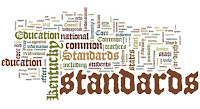Reading Proficiency
Guiding Principles of Good Reading Instruction
How do we help children become better readers? This question drives many of the conversations that we have during the course of the year. Inasmuch as it is a national discussion, it is also a district, building, and parent discussion. Everybody wants to know: how can we help children to read better?
As long as we have children who struggle, there will always be ongoing research to fine tune our understanding of how children learn to read. In the meantime, there is already a great deal of research that addresses this very important issue. When I think about how to help children become better readers, I think in terms of four guiding principles:
1. Create opportunities for children to read more often
2. Encourage children to read more pages
3. Help match books to readers
4. Provide expert instruction
If you find yourself questioning how to help children become better readers, consider planning instruction according to these principles. The first two tenets speak to reading volume. As you plan reading lessons, ask: Do I provide time for practice? How much are my students actually reading? Couple that with “Are my children reading books that are too hard?” and you have addressed three quarters of the reading puzzle.
Broken down like this, teaching everybody to read doesn’t seem like such an insurmountable task.

